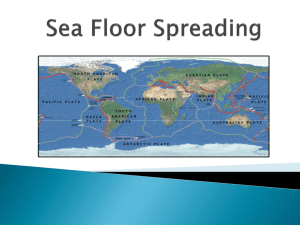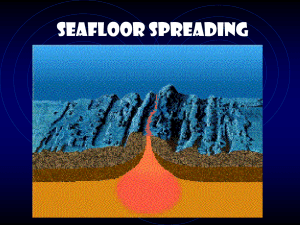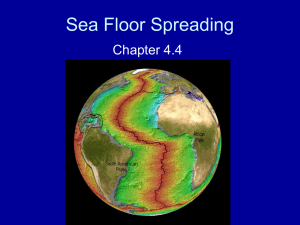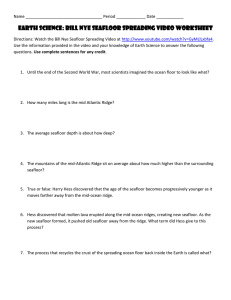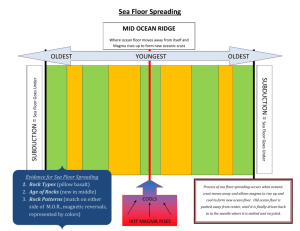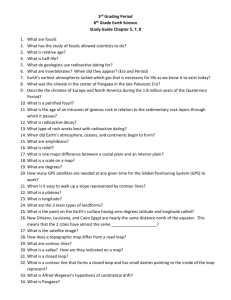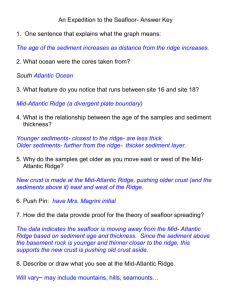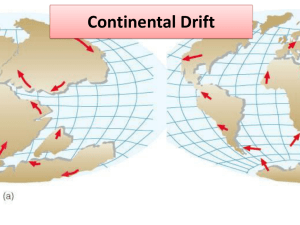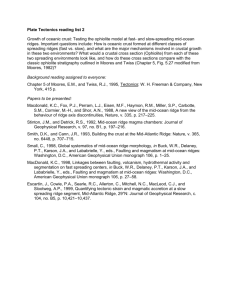Sea-Floor Spreading
advertisement
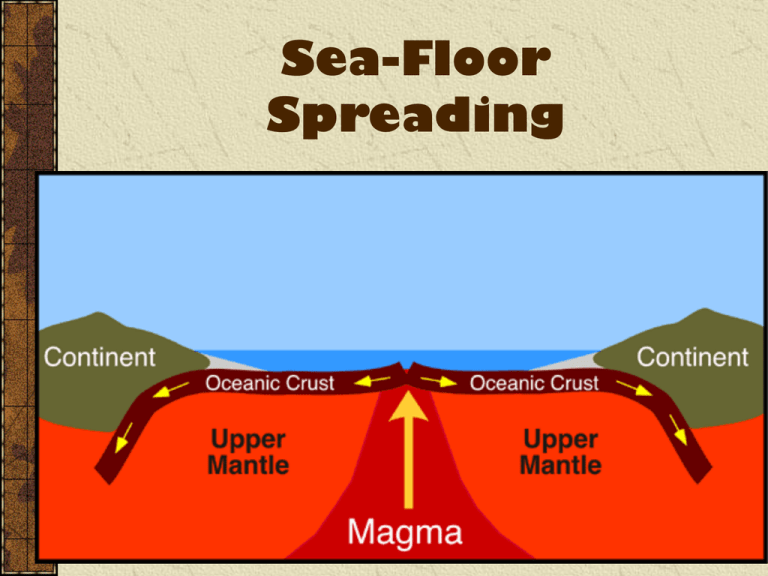
Sea-Floor Spreading Was Wegener Right? Recently, new technology has given us new clues into drifting continents. Wegener’s theory of drifting continents is supported by this new evidence. Mapping the MidOcean Ridge In the mid-1900s, scientists found the mid-ocean ridge underwater, which is the longest chain of mountains in the world. Scientists used sonar to map the ridge. Evidence for SeaFloor Spreading Finding the mid-ocean ridge supported Wegener’s theory of continental drift. Harry Hess was a scientist who suggested that the ocean floors move like conveyor belts. Evidence for SeaFloor Spreading Remember, there are two types of crust. Continental Crust ( “land”) Oceanic Crust (the land under the oceans There is a big crack in the oceanic crust, and this is where the mid-ocean ridge forms. Evidence for SeaFloor Spreading Hess suggested that along the mid-ocean ridge, magma rises from the mantle and erupts. The magma spreads out and pushes older rocks to both sides of the ridge. Evidence for SeaFloor Spreading This process is called seafloor spreading. Evidence for SeaFloor Spreading There are three key areas of evidence that support the theory of sea-floor spreading. Evidence from molten material (magma) Evidence from magnetic stripes Evidence from drilling samples Evidence from Molten Material Using a submarine, scientists found rocks that can only be formed when magma hits water. This proved that molten material has erupted from the mid-ocean ridge. Evidence from Magnetic Stripes Remember how Earth is a big magnet? Scientists found out that Earth’s magnet has reversed itself in recent history. Evidence from Magnetic Stripes When Earth’s magnetic field pointed north, the iron in the magma that erupted into the ocean faced one direction as it hardened. When Earth’s magnetic field reversed, the iron faced the opposite direction. This formed stripes. Evidence form Drilling Samples Scientists sent a ship to drill deep into the ocean floor and collect many rock samples. They then tested the age of the rocks using carbon dating. Evidence from Drilling Samples Scientists found out that the farther away from the mid-ocean ridge the samples were taken, the older the oceanic crust. The oceanic crust near the mid-ocean is youngest.

